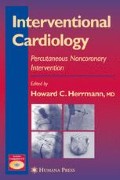Abstract
An atrial-septal defect (ASD) is defined as an opening or defect in the atrial septum, between the right and left atrium. It excludes the patent foramen ovale. Four types of ASDs are recognized with distinct anatomic and embryological differences:
-
1.
Primum defects arise from abnormal atrial-septal tissue development from the endocardial cushions.
-
2.
Secundum result from defects in the septum primum with incomplete overlap of septum secundum.
-
3.
Sinus venosus (superior vena cava type and inferior vena cava type) are defects in the part of the atrial septum that develops from the embryonic sinus venosus.
-
4.
Coronary sinus septal defect is a defect in septation between the coronary sinus and the left atrium (LA).
Access this chapter
Tax calculation will be finalised at checkout
Purchases are for personal use only
Preview
Unable to display preview. Download preview PDF.
References
Porter CJ, Feldt RH, Edwards WD, et al. Atrial septal defects. In: Moss and Adams’ heart disease in infants, children, and adolescents: including the fetus and young adult, 6th ed. Baltimore, MD: Williams and Wilkins, 2001:603–617.
Vick GW. Defects of the atrial septum including atrioventricular septal defects. In: The science and practice of pediatric cardiology, 2nd ed. Garson, Bricker, Fisher, and Neish, eds. Williams and Wilkins, Baltimore, MD: 1998:1141–1180.
Murphy JG, Gersh BJ, McGoon MD, et al. Long-term outcome after surgical repair of isolated atrial septal defect. N Engl J Med 1990;323:1645–1650.
Steele PM, Fuster V, Cohen M, Ritter DG, et al. Isolated atrial septal defect with pulmonary vascular obstructive disease—long-term follow-up and prediction of outcome after surgical correction. Circulation 1987;76(5):1037–1042.
Masura J, Gavora P, Formanek A, Hijazi ZM. Trans-catheter closure of secundum atrial septal defects using the new self-centering Amplatzer septal occluder: initial human experience. Cathet Cardiovasc Diagn 1997;42: 388–393.
Weeks SM. Unconventional venous access. Tech Vasc Intervent Radiol 2002;5(2):114–120.
Hijazi ZM, Cao Q, Patel HT, Rhodes J, et al. Trans-esophageal echocardiographic results of catheter closure of atrial septal defects in children and adults using the Amplatzer device. Am J Cardiol 2000;85:1387–1390.
Cao Q, Radtke W, Berger F, Zhu W, et al. Transcatheter closure of multiple atrial septal defects. Initial results and value of two-and three-dimensional transesophgeal echocardiography. Eur Heart J 2000; 21(11): 941–947.
Abdul Wahab H, Bairam AR, Cao QL, Hijazi ZM. Novel technique to prevent prolapse of the Amplatzer septal occluder through large atrial septal defect. Catheter Cardiovasc Interv 2003;60:543–545.
Du ZD, Hijazi ZM, Kleinman CS, Silverman NH, Larntx K, for the Amplatzer investigators. Comparison between transcatheter and surgical closure of secundum atrial septal defect in children and adults: results of a multi-center non-randomized trial. J Am Coll Cardiol 2000;39:1836–1844.
Durongpisitkul K, Soongswang J, Laohaprasitiporn D, et al. Comparison of atrial septal defect closure using amplatzer septal occluder with surgery. Pediatr Cardiol 2002;23(1):36–40.
Fischer G, Stieh J, Uebing A, et al. Experience with transcatheter closure of secundum atrial septal defects using the Amplatzer septal occluder: a single centre study in 236 consecutive patients. Heart. 2003;89(2): 199–204.
Kim JJ, Hijazi ZM. Clinical outcomes and cost of Amplatzer transcatheter closure as compared with surgical closure of ostium secundum atrial septal defects. Med Sci Monit 2002;8(12):CR787–CR791.
Author information
Authors and Affiliations
Editor information
Editors and Affiliations
Rights and permissions
Copyright information
© 2005 Humana Press Inc., Totowa, NJ
About this chapter
Cite this chapter
Patel, H., Holzer, R., Cao, QL., Hijazi, Z.M. (2005). Transcatheter Closure of Atrial-Septal Defects Using the Amplatzer Devices. In: Herrmann, H.C. (eds) Interventional Cardiology. Contemporary Cardiology. Humana Press. https://doi.org/10.1385/1-59259-898-6:161
Download citation
DOI: https://doi.org/10.1385/1-59259-898-6:161
Publisher Name: Humana Press
Print ISBN: 978-1-58829-367-1
Online ISBN: 978-1-59259-898-4
eBook Packages: MedicineMedicine (R0)

